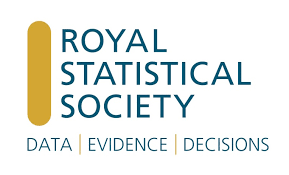27 October 2017 – Quite a few years ago I was attending a workshop at the Royal Statistical Society (RSS) in London (I have been a long-time member) on the graphical interpretations of data. It was a series on the design of simple graphs – graphs you could draw with pencil and ruler but that are now more likely to be produced using software. As the presenters noted, computer visualisations are often misguided in that they involve a simulated third dimension or animations that may show off sophisticated computing power, but the outcome is style over substance. This course cut to the chase and has certainly informed everything I write about data visualisation.
It was also the venue where I first attended a program that discussed predictive coding (as applied in e-discovery) that was not sponsored by or involved anybody in the legal industry. Just a course on how to digest, to apply, and to test, data relying on statistics.
The RSS is a wonderful organization, set up as a charity that promotes statistics, data and evidence for the public good. It is a learned society and professional body, working with and for members to promote the role that statistics and data analysis play in society, share best practice, and support the profession. It is where I have learned the most about machine learning.
And their programs about falsehoods and conspiracy theories, about individuals’ epistemic beliefs, about people’s conviction that “facts” are politically constructed (“Truth is political”) have been critical in my current deep dive into the whole political manipulation/Russia/Facebook imbroglio (Part 1 coming next month).
Last week on European Statistics Day the RSS (in conjunction with the Inns of Court College of Advocacy) launched a new guide for the legal profession on basic statistics and probability, its intent to do what I noted above: be a valuable companion to those who are asked to digest, to apply, and to test, expert opinion relying on statistics. It provides a brief overview of statistics when applied in courts of law, and identifies the pitfalls that advocates are likely to meet when handling statistical evidence, such as misunderstandings of probability, conflating correlation/causation and the difference between absolute and relative risk. The book also includes a chapter introducing the basics of statistics, probability and the scientific method.
It’s a great book. And don’t sweat the math. For the RSS press release with a link to the book (it’s free) click here.
